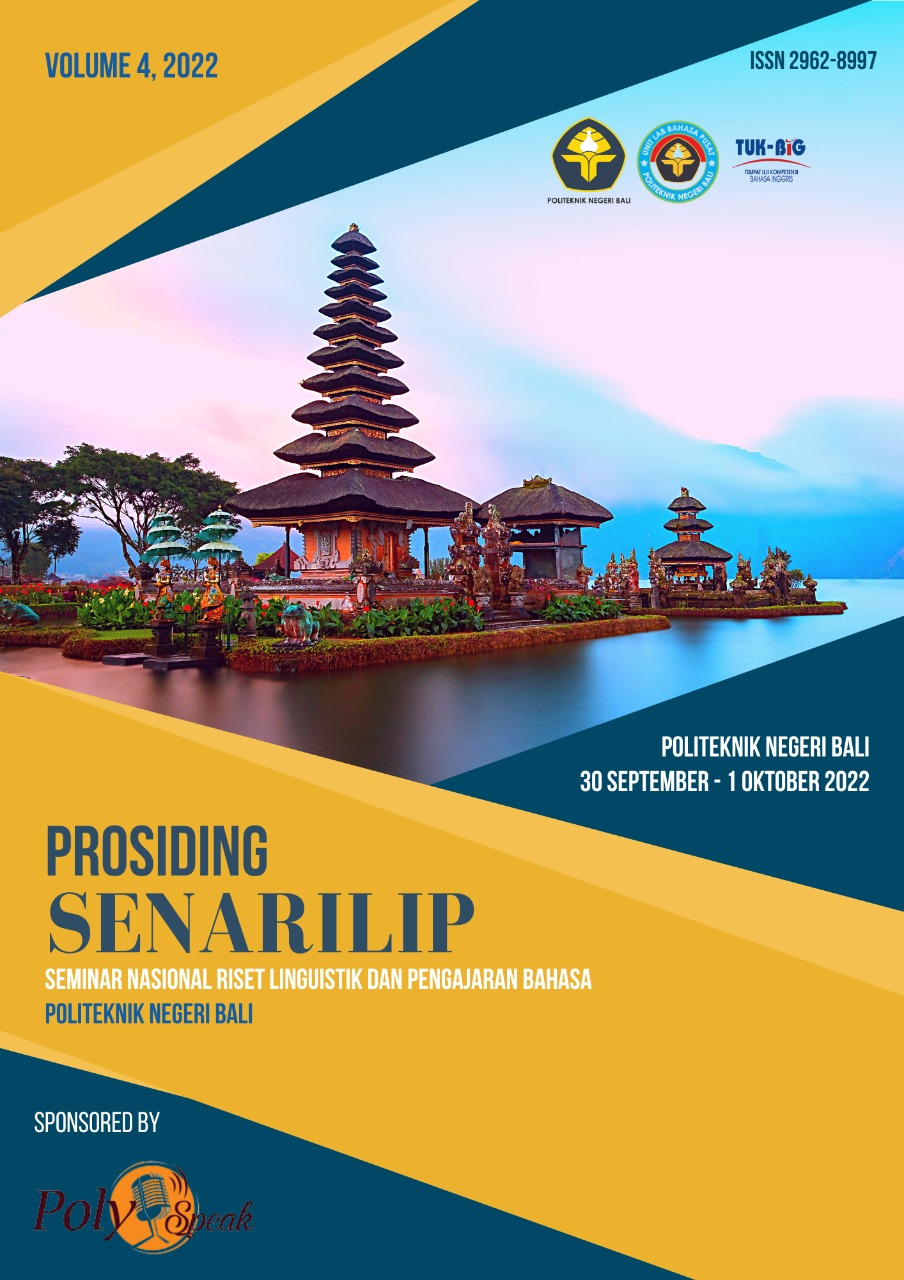Pengayaan Kosa Kata Budaya dalam Pembelajaran BIPA melalui Konsep Palemahan
Keywords:
BIPA, , cultural vocabulary, palemahan conceptAbstract
Learning the cultural values of the archipelago is a very interesting aspect for Indonesian Language for Foreign Speakers (BIPA) students. The purpose of this study is to assist BIPA students in enriching their Indonesian vocabulary, especially cultural vocabulary. To enrich the cultural vocabulary of BIPA students, an interesting method is needed so that their cultural understanding is deeper and the learning process becomes more enjoyable. One of the concepts that is tried to be applied in this study is the concept of "palemahan". Palemahan is one part of Trihita Karana's philosophy of life, which is a philosophical value of living in harmony in the relationship between humans and nature. Questionnaire and observation methods were used in data collection. The data obtained were then analyzed by qualitative descriptive methods and Spradley's ethnography. The stages of acquiring the cultural repertoire of BIPA students can be carried out using the observation method in stages starting from the closest living environment (house, village, city, or island territory), natural environment, agriculture, religion or belief, and museum. Based on the results of trials on twenty BIPA students, it can be
concluded that this method is is very interesting for learners with 96,8 % average responses. The reason is that BIPA students can understand more deeply how humans organize their harmony with nature and their homes. One of the most popular methods is direct immersion into cultural objects.

